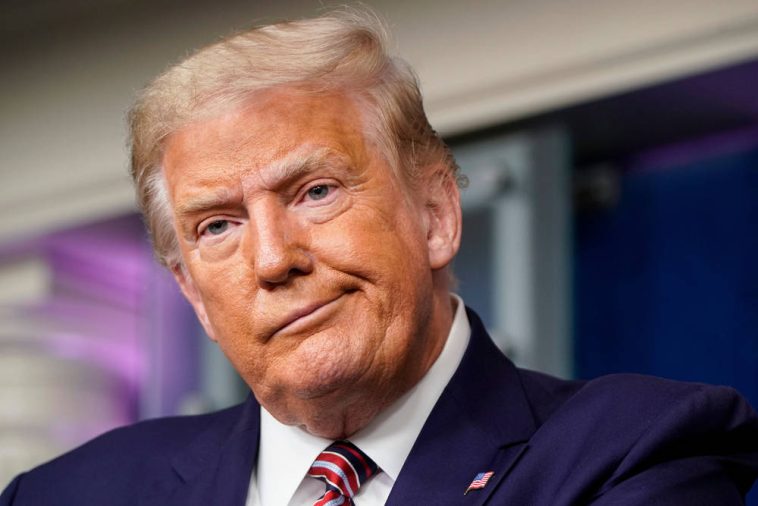It’s been less than two weeks since Donald Trump returned to the White House, and the effect the administration may have on the global tech industry is still far from clear.
A recent Forrester report highlights two potential economic paths under the new administration. One scenario sees import tariffs driving up costs – typically for those buying the end product in America – and fueling inflation, which may prompt the Federal Reserve to raise interest rates.
The other involves spending cuts driven by Elon Musk’s Department of Government Efficiency, which aims to reduce oversight and deregulate industries; Forrester suggests this could slow economic growth, potentially leading the Fed to lower interest rates, but at the cost of reduced imports – impacting major US trade partners.
Elon Musk waiting for someone to high five him for a sweet burn against the libs, at Trump’s 2025 inauguration … Click for source
Either way, the global tech industry – and the imported goods the US relied on – is caught between a rock and a hard place.
With Musk’s DOGE working through a considerable list of potential changes, it remains to be seen whether Musk’s expected government downsizing will significantly impact tech spending.
“Lower spending would slow imports and make it more difficult for exporter countries to the US, like China, Mexico, Germany, Ireland, Taiwan, Japan, South Korea, and Canada, to find growth,” the report predicted. That, in turn, could lead to tariffs to reduce net trade deficits.
If those spending and imports shrink in the US, driving down sales of foreign products, Forrester predicts that China, the European Union, and Mexico will be hit the hardest. The Office of the US Trade Representative lists these three as the largest suppliers of goods to the US.
“European life sciences, automotive, and chemicals are the most vulnerable industries to a new US presidency, with 69 percent of European exports to the US coming from machinery, transport equipment, chemicals, and chemical-related products,” Forrester said. Mexico’s largest exports to the US include vehicles, machinery and electronics. China’s largest export to the US, naturally, is electronics.
Tariffs probably coming either way
Regardless of DOGE’s plans, import tariffs are already on the horizon. The White House said on Friday that the 25 percent tariffs on Mexico and Canada may go into effect this weekend, while goods from China may face a 10 percent levy. Canada, which largely exports mineral fuels and oils, vehicles, and machinery to the US, may see a bit of reprieve, as Trump is considering whether to exempt oil from the US’ northern and southern neighbors from the import taxes.
Poetically, these taxes on Mexican and Canadian imports would blow up the free trade agreement Donald Trump himself negotiated with the pair in his previous term.
Additionally, Trump has threatened China, and anyone else producing semiconductors outside the US, with import tariffs as high as 100 percent to drive manufacturing back to America. Taiwan’s TSMC, the largest chipmaker in the world, produces 92 percent of the leading-edge semiconductors used by the US, according to Forrester. It has been singled out by Trump for earning the business of US chip designers including AMD, Apple, and Nvidia.
“The new administration will force companies to build chips domestically through the imposition of tariffs,” Forrester predicted – but with a twist: Analysts who authored the report don’t expect subsidies from the CHIPS and Science Act that incentivized the production of stateside semiconductor manufacturing to remain at current levels.
“The financial subsidies of the CHIPS and Science Act to encourage domestic chip production will likely be reduced or abandoned,” the report stated.
The future of those funds was in doubt shortly after Trump won the presidential election in November.
US chip fabs haven’t been going up smoothly, even with the funds from the CHIPS Act slowly trickling out. TSMC’s and Intel’s fab projects in Arizona have been hampered by high material and labor costs. Intel’s planned plant in Ohio has been postponed until 2026, and that was before the chipmaker had a dreadful 2024.
You probably have more CIO experience than the incoming White House CIO
Now Trump’s import tariffs could raise the cost of a laptop for Americans by 68%
Fine print in Intel’s CHIPS Act deal includes requirement to keep control of its foundries
Europe, UK weigh up how to respond to Trump’s proposed tariffs. One WTF or two?
TSMC, meanwhile, is still trying to get the first of its US fabs off the ground this year, but its other fabs in the complex likely won’t come online for a few more years.
“Potential tariff trade wars between countries place uncertainty on final outcomes: The Semiconductor Industry Association and the Chamber of Progress believe that tariff wars between China and the US may harm US chipmakers,” Forrester said. “Changes to chip supply to the US will take time to implement.”
Green transition rollback will affect tech, too
Trump moved quickly to scrap Biden-era orders promoting electric vehicles, EV infrastructure, alternative energy and other elements of the so-called Green New Deal.
The elimination of things like permits for wind energy projects and promotion of domestic fossil fuel production will slow the adoption of clean energy, EVs, solar panels and batteries, Forrester said. It will have an impact on tech professionals, too.
“The jobs most at risk from a slowdown of the green economy are in installation, maintenance, and repair; computer and mathematical occupations,” Forrester noted. “Industries in professional, scientific, and technical services, as well as construction … are also more likely to be impacted.”
It’s hard to see an upside to any of this. If DOGE’s spending cuts slow economic growth, the Fed may lower interest rates, potentially reducing imports and prompting new import tariffs, Forrester said. Meanwhile, Trump’s planned import taxes could drive up costs and inflation, which might push the Fed to raise rates, strengthening the dollar but increasing borrowing costs.
We’ve reached out to Forrester to learn more about the impacts from its predictions, and whether there’s a sunny side to all of this, and we’ll let you know if they have more to share. ®





GIPHY App Key not set. Please check settings